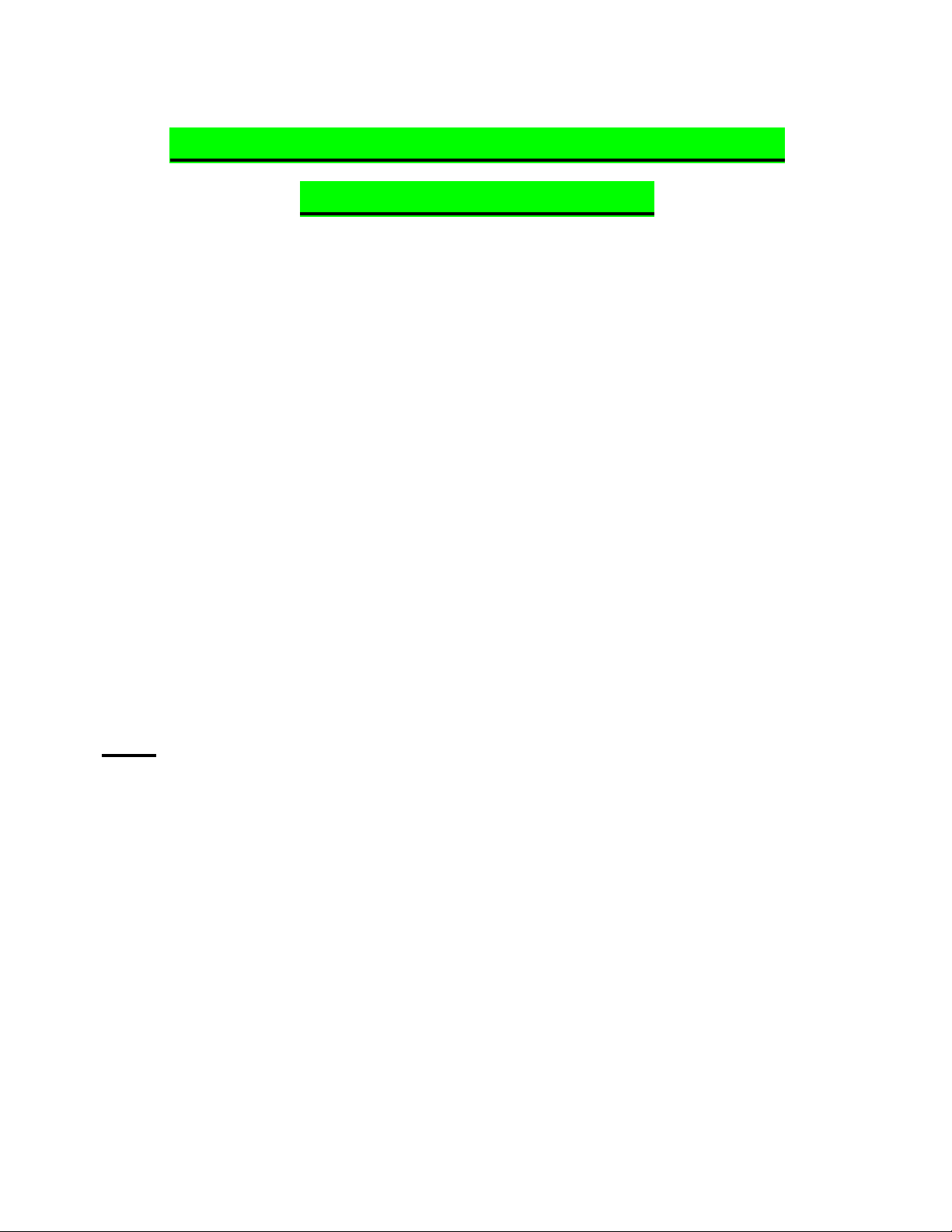
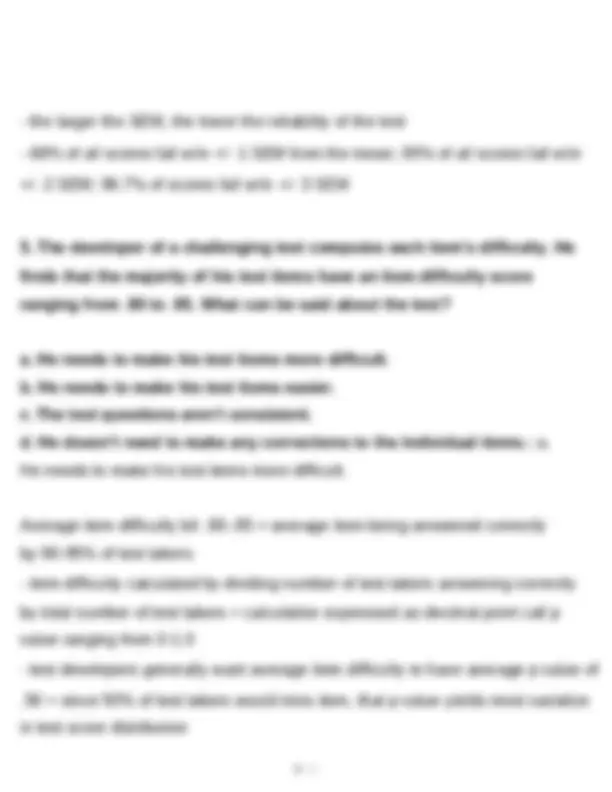
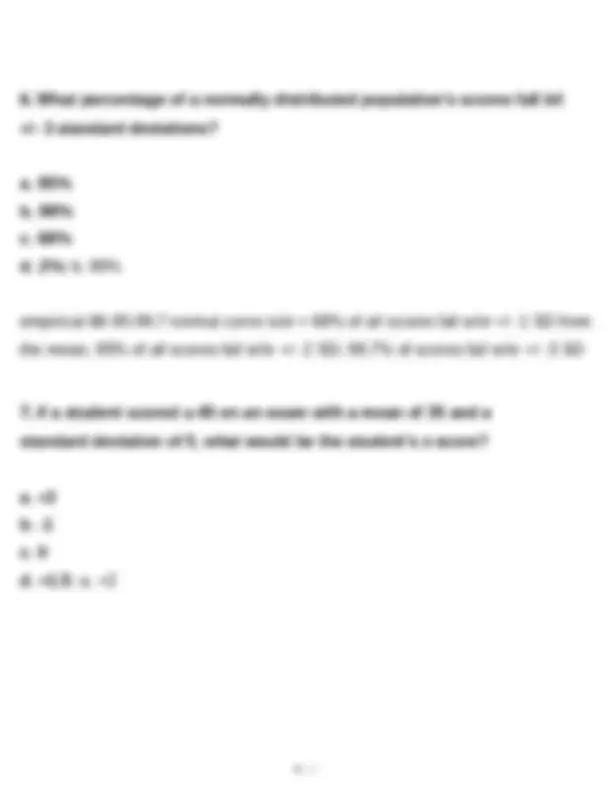
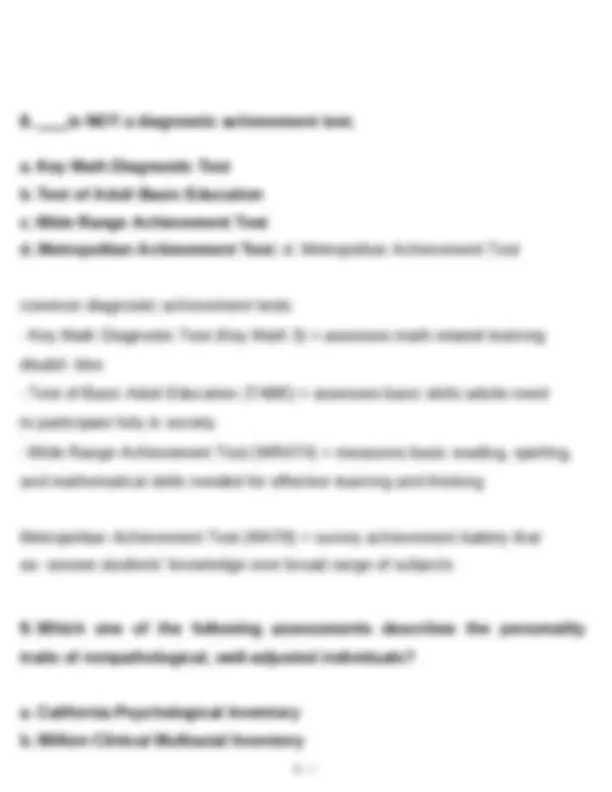
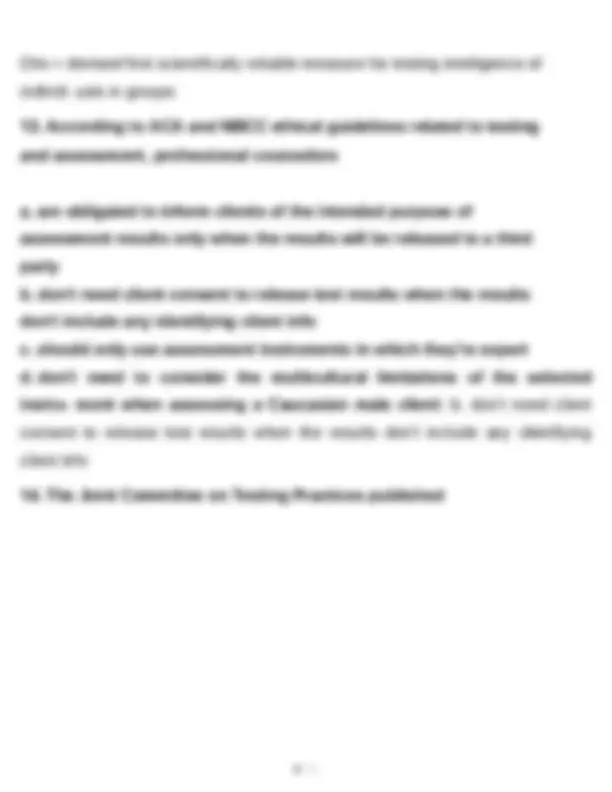
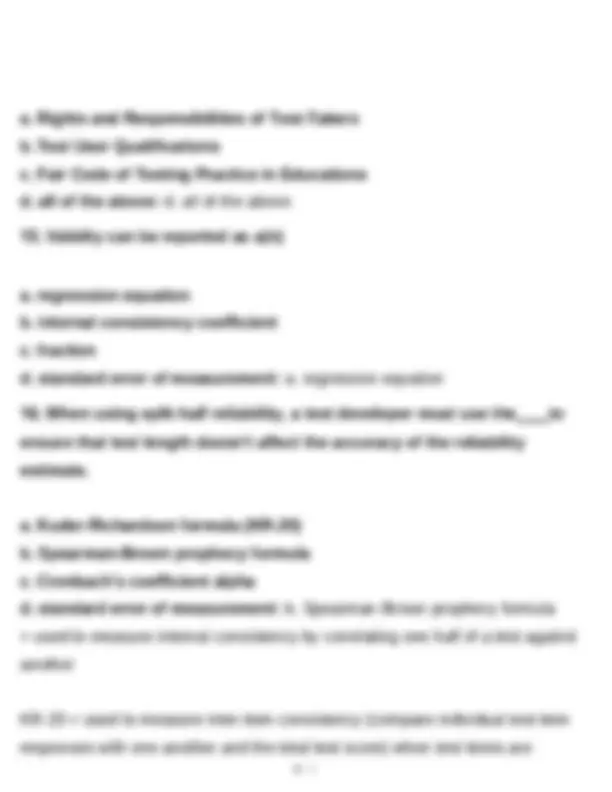
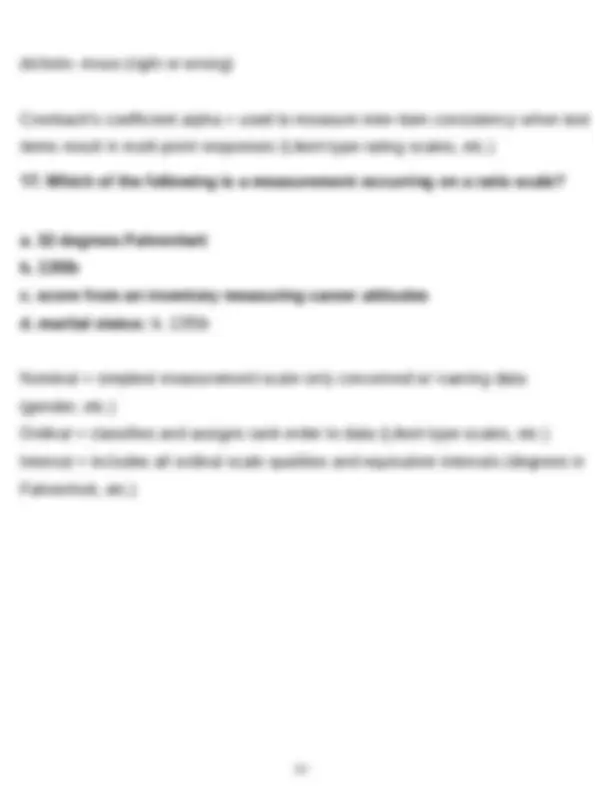
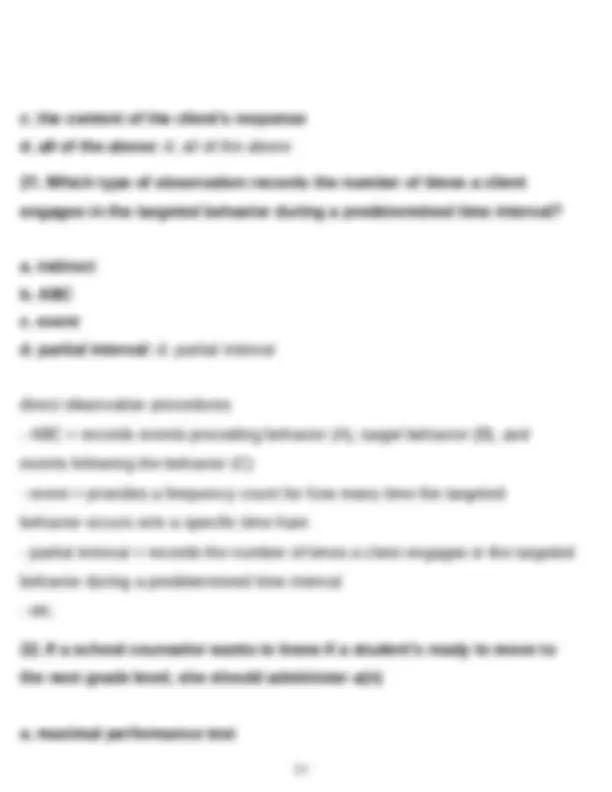
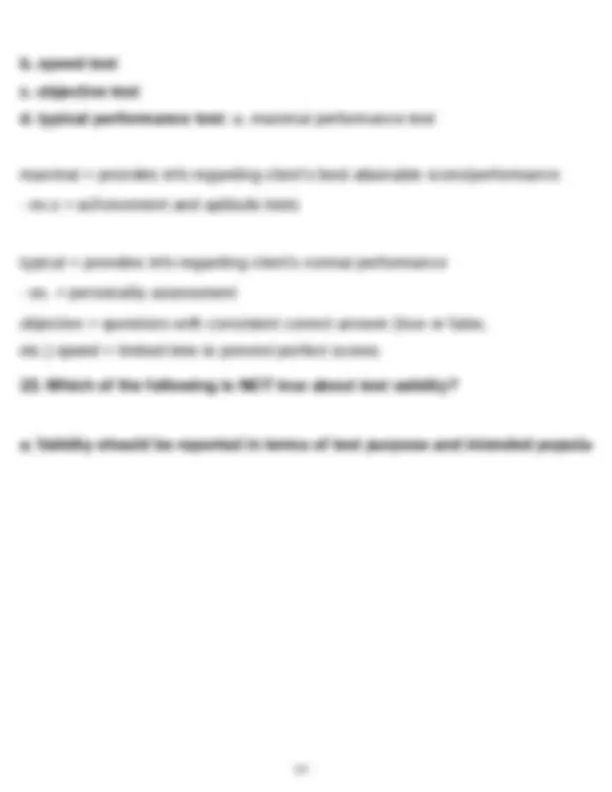
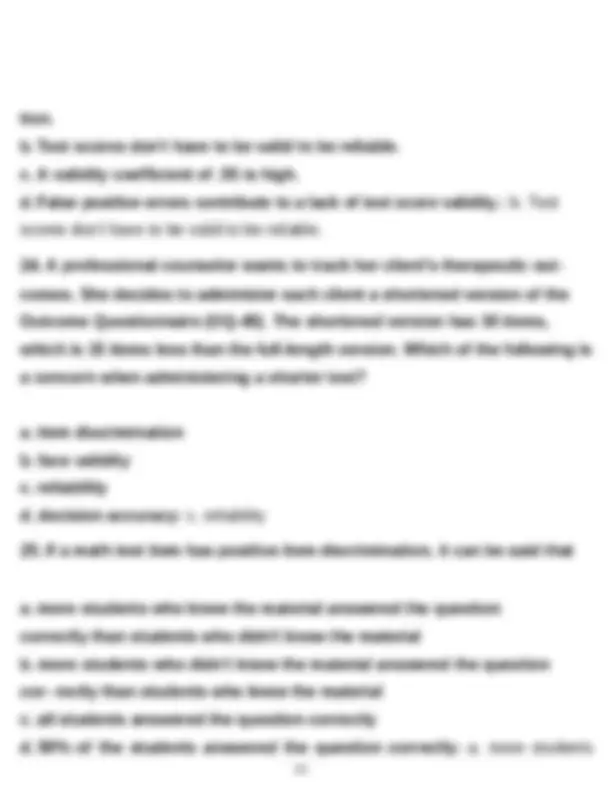
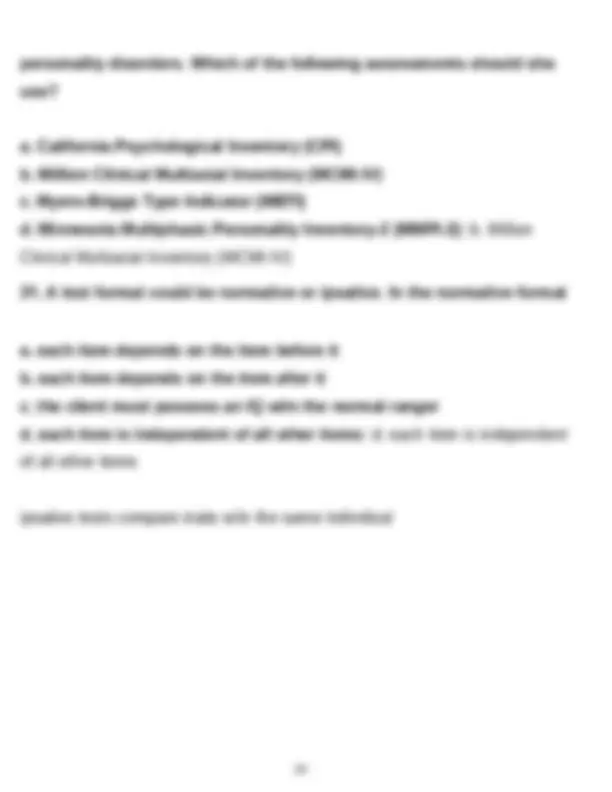
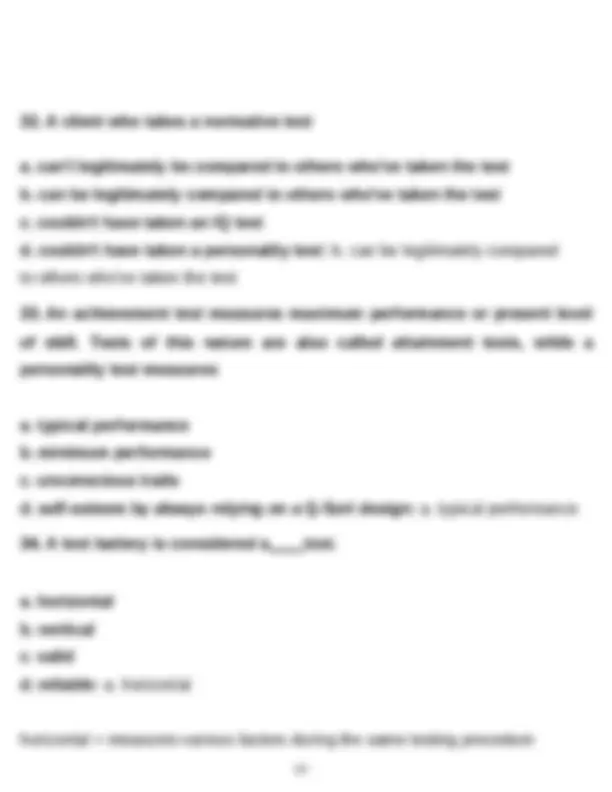
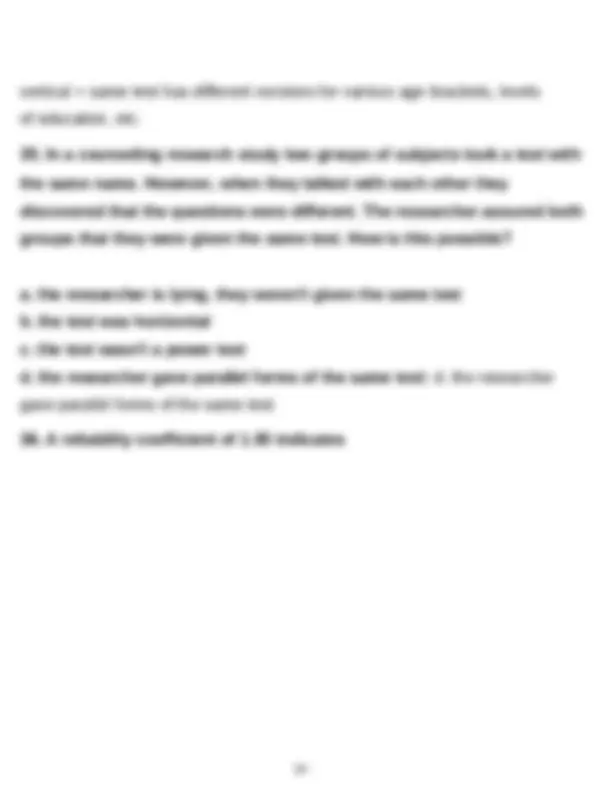
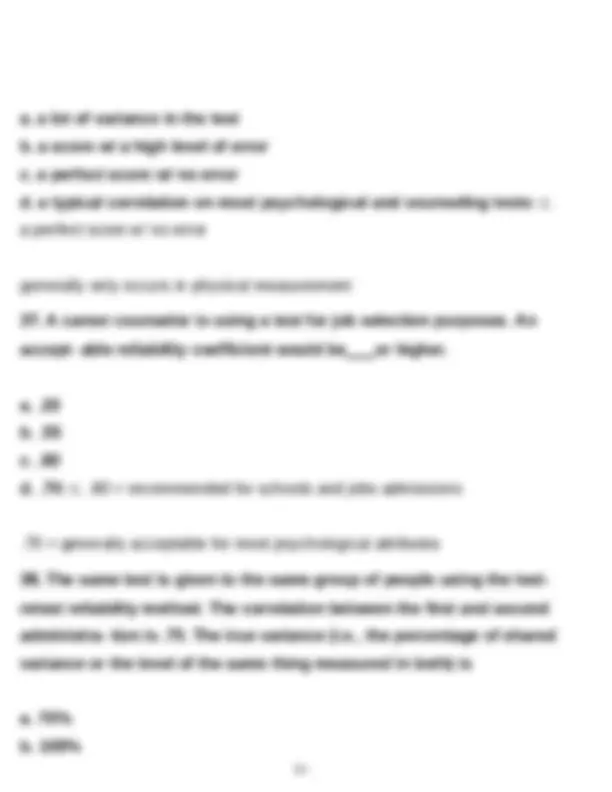
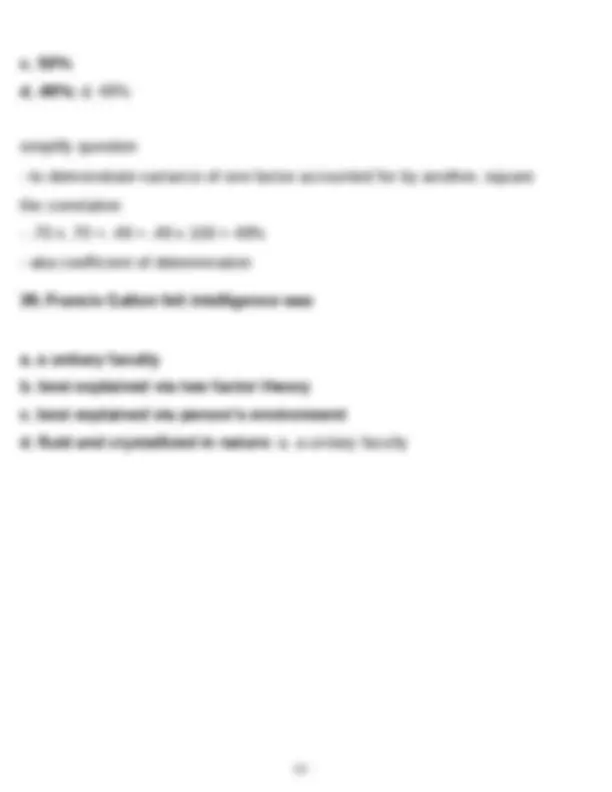
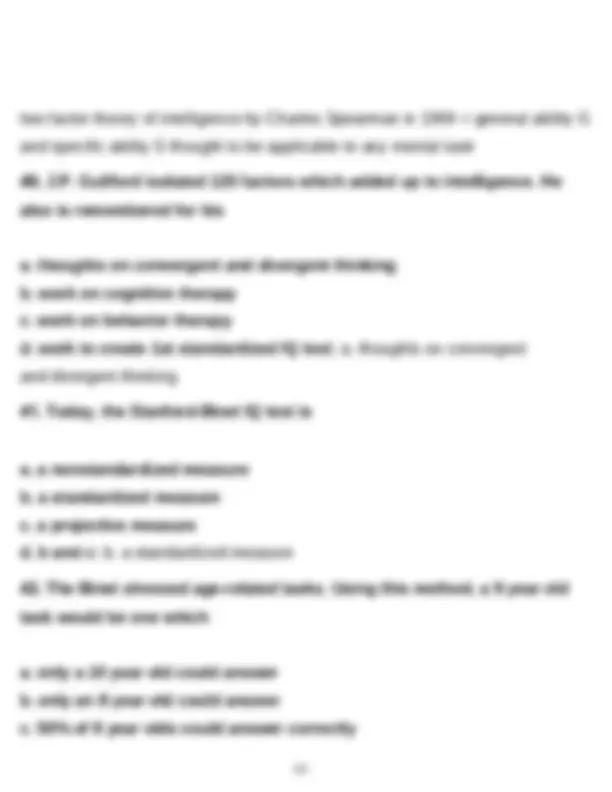
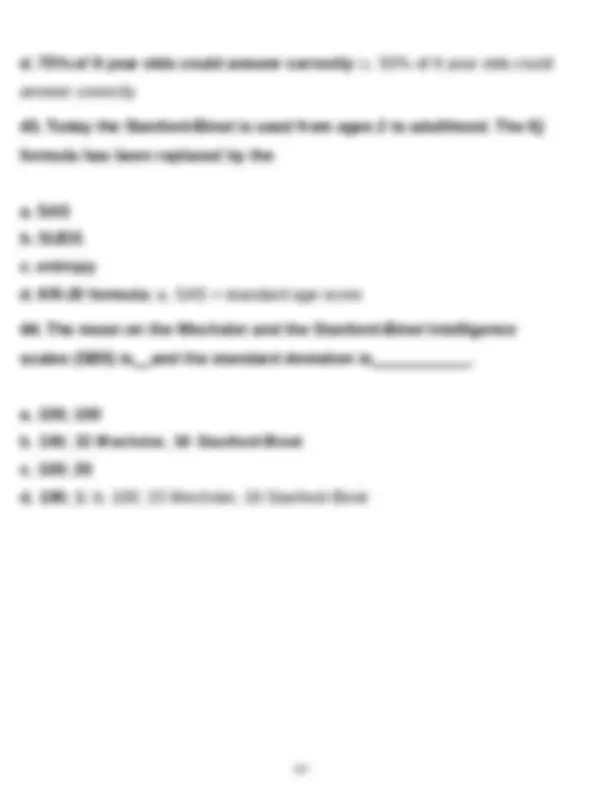
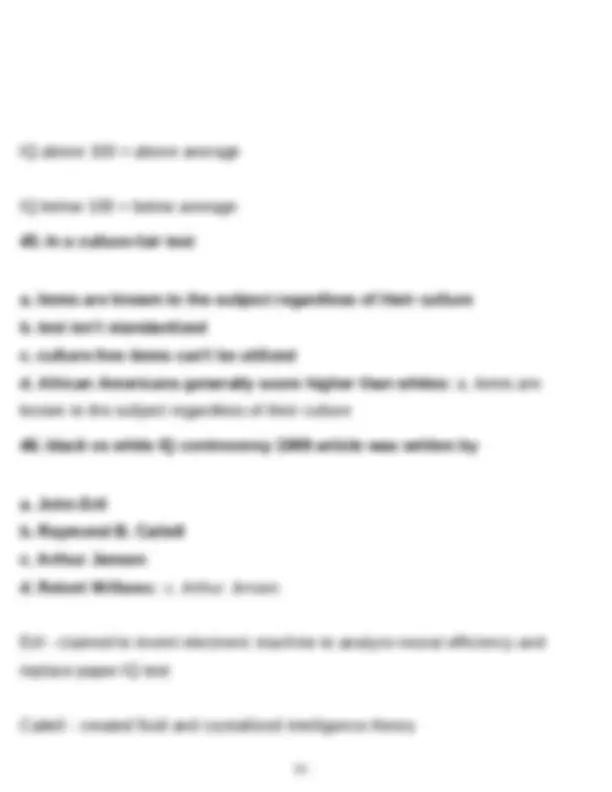
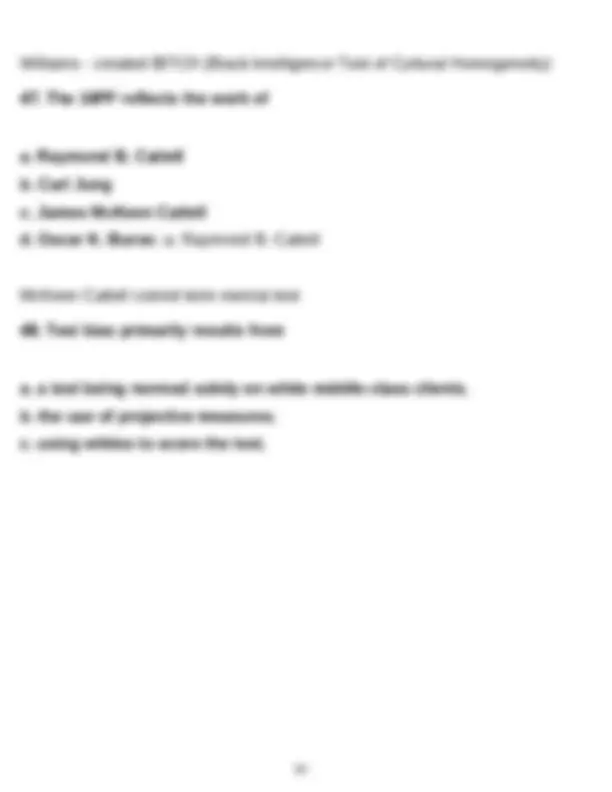
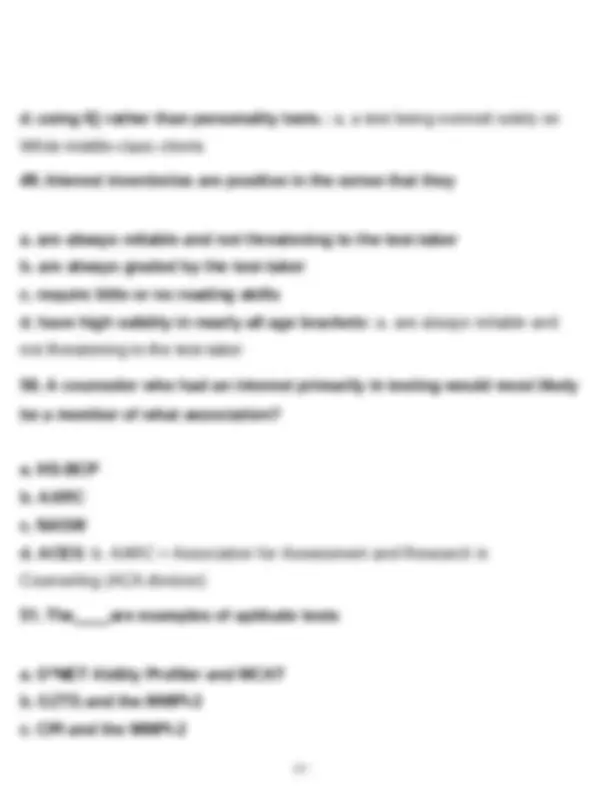
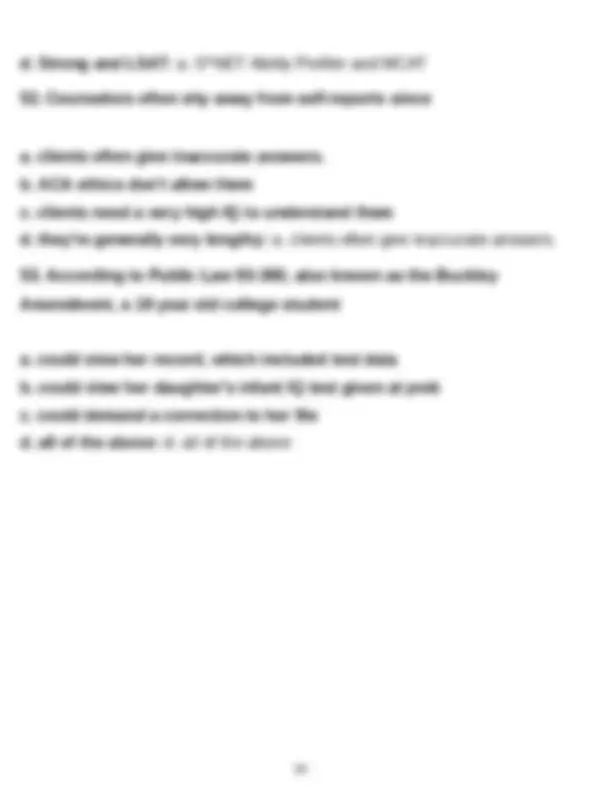
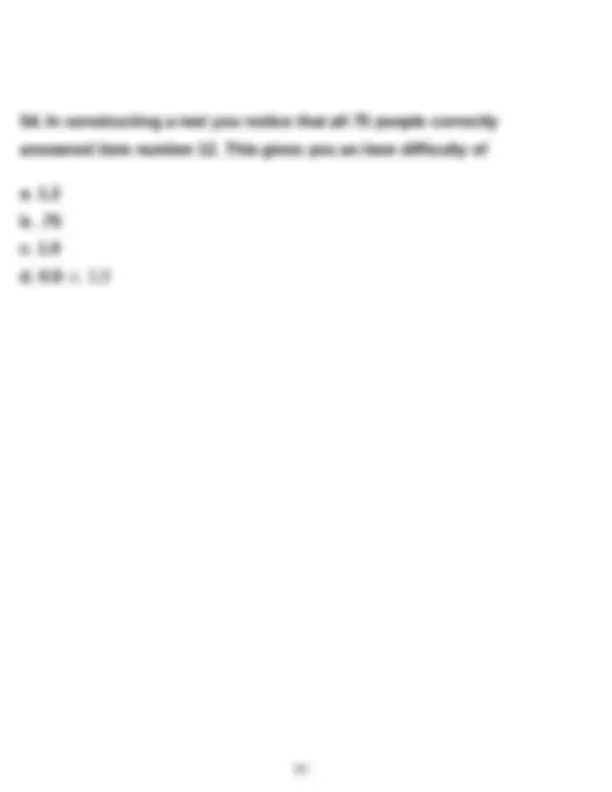


Study with the several resources on Docsity

Earn points by helping other students or get them with a premium plan


Prepare for your exams
Study with the several resources on Docsity

Earn points to download
Earn points by helping other students or get them with a premium plan
Community
Ask the community for help and clear up your study doubts
Discover the best universities in your country according to Docsity users
Free resources
Download our free guides on studying techniques, anxiety management strategies, and thesis advice from Docsity tutors
1. NCE practice exam for counseling licensure 2. Free NCE sample questions and answers 3. NCE exam study guide for mental health counselors 4. Best online NCE practice tests for 2023 5. NCE exam preparation tips and strategies 6. How to pass the NCE exam on first attempt 7. NCE practice exam with explanations 8. NCE exam content areas breakdown 9. NCE practice questions for human growth and development 10. NCE exam anxiety management techniques 11. NCE practice test for social and cultural diversity 12. NCE exam time management strategies 13. NCE practice exam for career development counseling 14. NCE exam study schedule for working professionals 15. NCE practice questions for counseling and helping relationships 16. NCE exam scoring and passing requirements 17. NCE practice test for group counseling and group work 18. NCE exam retake policy and waiting period 19. NCE practice exam for assessment and testing in counseling 20. NCE exam accommodations for test-takers with disabilities
Typology: Exams
1 / 29

This page cannot be seen from the preview
Don't miss anything!






















1. Power tests a. use time to prevent perfect scores b. are concerned with normal performance c. assess how quickly the test taker can understand the question and choose the right answer d. prevent perfect scores by including difficult test items: d. prevent perfect scores by including difficult test items 2. The is NOT an example of a subjective test. a. Rorschach inkblot test b. sentence completion test c. Mental Status Exam (MSE) d. MBTI: d. MBTI 3. Which of the following is NOT true concerning construct validity? a. It's empirically established by examining the relationship b/t data
collected from the instrument and a specific criterion. b. It's important to establish when an instrument measures an abstract construct. c. It's defined as the extent to which an instrument measures a theoretical construct. d. It can be determined through experimental design or factor analysis.: a. It's empirically established by examining the relationship b/t data collected from the instrument and a specific criterion.
4. If an individual's mean score after multiple test administrations is 84 and the SEM is 5, what can be said about the distribution of his observed scores? a. 95% of the time his observed scores will fall b/t 89- b. 68% of the time his observed scores will fall b/t 89- c. 68% of the time his observed scores will fall b/t 91- d. there isn't enough info provided to make a determination: b. 68% of the time his observed scores will fall b/t 89- SEM = Standard Error of Measurement = Standard Deviation (SD) of an individual's repeated test scores when adminis- tered the same test multiple times
6. What percentage of a normally distributed population's scores fall b/t +/- 3 standard deviations? a. 95% b. 99% c. 68% d. 2%: b. 99% empirical 68-95-99.7 normal curve rule = 68% of all scores fall w/in +/- 1 SD from the mean; 95% of all scores fall w/in +/- 2 SD; 99.7% of scores fall w/in +/- 3 SD 7. if a student scored a 45 on an exam with a mean of 35 and a standard deviation of 5, what would be the student's z-score? a. + b. - c. 0 d. +1.5: a. +
8. is NOT a diagnostic achievement test. a. Key Math Diagnostic Test b. Test of Adult Basic Education c. Wide Range Achievement Test d. Metropolitan Achievement Test: d. Metropolitan Achievement Test common diagnostic achievement tests
c. narrow-band; broad-band d. narrative; event: a. broad-band; narrow-band
11. Considering only applicant SAT scores for an academic scholarship perpetuates bias. a. ecological b. response c. examiner d. test: a. ecological 12. This 19th century pioneer is credited with recognizing that intellectual disability (at the time referred to as mental retardation) was related to devel- opmental deficiencies rather than mental illness. a. Edouard Seguin b. Charles Spearman c. Jean Esquirol d. Arthur Otis: c. Jean Esquirol Seguin = developed the form board, which improved motor skills of individuals w/ intellectual disabilities Spearman = developed statistical test of factor analysis w/ L.L. Thurston
Otis = devised first scientifically reliable measure for testing intelligence of individ- uals in groups
13. According to ACA and NBCC ethical guidelines related to testing and assessment, professional counselors a. are obligated to inform clients of the intended purpose of assessment results only when the results will be released to a third party b. don't need client consent to release test results when the results don't include any identifying client info c. should only use assessment instruments in which they're expert d. don't need to consider the multicultural limitations of the selected instru- ment when assessing a Caucasian male client: b. don't need client consent to release test results when the results don't include any identifying client info 14. The Joint Committee on Testing Practices published
dichoto- mous (right or wrong) Cronbach's coefficient alpha = used to measure inter-item consistency when test items result in multi-point responses (Likert-type rating scales, etc.)
17. Which of the following is a measurement occurring on a ratio scale? a. 32 degrees Fahrenheit b. 135lb c. score from an inventory measuring career attitudes d. marital status: b. 135lb Nominal = simplest measurement scale only concerned w/ naming data (gender, etc.) Ordinal = classifies and assigns rank order to data (Likert-type scales, etc.) Interval = includes all ordinal scale qualities and equivalent intervals (degrees in Fahrenheit, etc.)
Ratio = includes qualities of nominal, ordinal, and interval scales with absolute zero point
18. If a student scored an 82 on an exam with a mean of 80 and a standard deviation of 2, what would be the student's normal curve equivalent? a. 71. b. 50 c. +1. d. 23.68: a. 71. Normal Curve Equivalent (NCE) = 21.06(z) + 50 z = X - M / SD this questions
c. the content of the client's response d. all of the above: d. all of the above
21. Which type of observation records the number of times a client engages in the targeted behavior during a predetermined time interval? a. indirect b. ABC c. event d. partial interval: d. partial interval direct observation procedures
b. speed test c. objective test d. typical performance test: a. maximal performance test maximal = provides info regarding client's best attainable score/performance
who knew the material answered the question correctly than students who didn't know the material
26. In a normal distribution, of scores fall b/t -1 and +2 standard devia- tions? a. 68% b. 2% c. 82% d. 98%: c. 82% 27. If the mean on an intelligence test is 100 and the standard deviation is 20, what's the percentile rank of a client who scored 80 on that test? a. 34 b. 50 c. 84
d. 16: d. 16 mean - score = SD from mean 100 - 80 = 20 > -1 SD -1 SD on normal curve chart = 16th percentile
28. An individual with a z-score of -1.3 has a stanine score of a. 2. b. 37 c. 2 d. 22.62: a. 2. 29. William Stern's ratio intelligence quotient, popularized on early versions of the Stanford-Binet Intelligence Scales, was calculated by dividing one's a. mental age by chronological age b. broad cognitive abilities by narrow cognitive abilities c. chronological age by mental age d. narrow cognitive abilities by broad cognitive abilities: a. mental age by chronological age 30. A counselor wants to administer an objective personality assessment to her adult client. She wants the assessment to identify DSM-5 related
32. A client who takes a normative test a. can't legitimately be compared to others who've taken the test b. can be legitimately compared to others who've taken the test c. couldn't have taken an IQ test d. couldn't have taken a personality test: b. can be legitimately compared to others who've taken the test 33. An achievement test measures maximum performance or present level of skill. Tests of this nature are also called attainment tests, while a personality test measures a. typical performance b. minimum performance c. unconscious traits d. self-esteem by always relying on a Q-Sort design: a. typical performance 34. A test battery is considered a test. a. horizontal b. vertical c. valid d. reliable: a. horizontal horizontal = measures various factors during the same testing procedure
vertical = same test has different versions for various age brackets, levels of education, etc.
35. In a counseling research study two groups of subjects took a test with the same name. However, when they talked with each other they discovered that the questions were different. The researcher assured both groups that they were given the same test. How is this possible? a. the researcher is lying, they weren't given the same test b. the test was horizontal c. the test wasn't a power test d. the researcher gave parallel forms of the same test: d. the researcher gave parallel forms of the same test 36. A reliability coefficient of 1.00 indicates